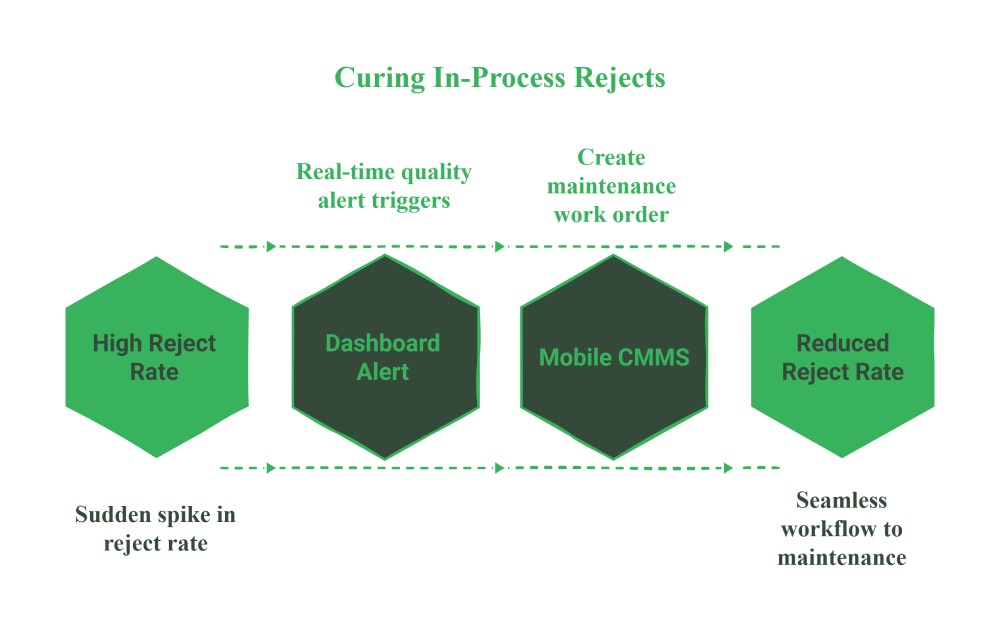Key Takeaways
-
OEE Quality measures the percentage of good parts produced out of the total parts started, also known as First Pass Yield. The world-class benchmark is 99.9%.
-
The formula is a simple ratio: Quality = Good Count / Total Count.
-
There are two types of quality loss: In-Process Rejects (often a machine health issue) and Startup Rejects (often a process or setup issue).
-
A true solution doesn't just track these losses; it uses an integrated CMMS to cure them by triggering maintenance actions and standardizing setup procedures.








